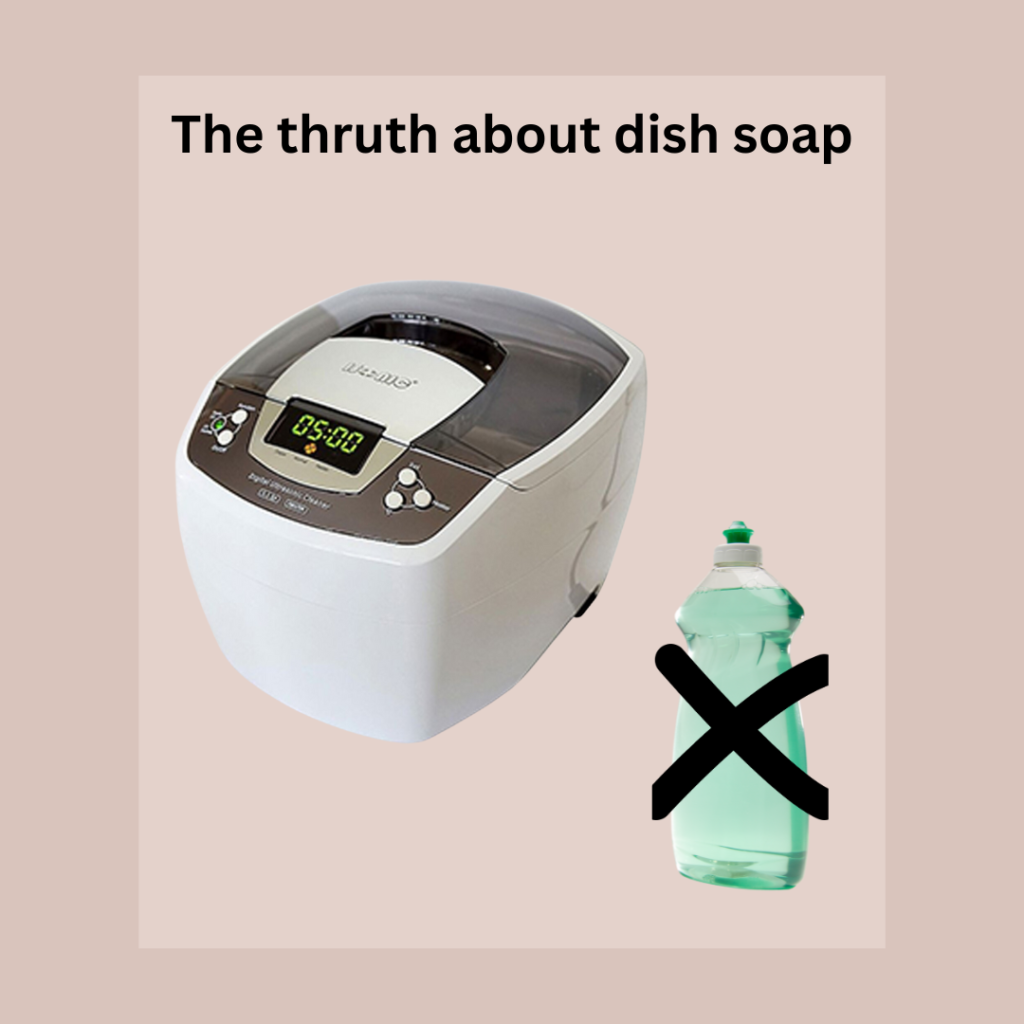I was asked recently, by more than one person; is it okay to use Dawn dish soap in my ultrasonic cleaner.
I suppose one would think that is okay, since when we wash our tools at the sink, we typically use dawn or some other type of liquid cleanser.
The short answer is NO!
Let’s begin with a couple of definite DO NOT’S;
- Never fill the tank of an ultrasonic cleaner with alcohol, gasoline, or any other flammable liquids. They will vaporize, and could cause a fire or explosion, or release harmful gasses into the workspace. This includes your disinfection products which more than likely include one of the above.
- Avoid putting chlorine bleach into the tank. Bleach does not promote good cavitation activity.
Let’s explain a couple of “need to know’s”;
- An enzymatic cleaner, which is what is recommended to use in an ultrasonic cleaner, is a type of cleaning solution that contains enzymes that help to break down soils at a neutral pH (typically pH 6-8).
- Vinegar/lemon are NOT enzymatic cleaners. Why? Both lemon and vinegar solutions are acidic cleaners.
- If using dish soap in an ultrasonic cleaner, you run the risk of its compatibility with the material you are cleaning. For example, using water and dish soap with some metals can cause rust and corrosion.
I did some additional research and reached out to a couple of my contacts both in the Beauty Industry and the Dental Industry. Their synopsis was exactly the same.
This is where enzymatic cleaners which target specific debris become very important.
- The Lipase found in an enzymatic cleaner is designed to degrade lipids or oils
- The protease found in an enzymatic cleaner is for removing proteins
- The catalase found in an enzymatic cleaner is for cellulose and
- The amylase found in an enzymatic cleaner is for starches or carbohydrates.
The Dental industry as an example adheres to strict protocols of hygiene for their instruments and would never use a dish detergent in an ultrasonic.
The Beauty Industry should adhere to the same policies.
So, I look at it this way.
Are you unfamiliar with the benefits of using an ultrasonic cleaner?
- Saves time. As I’ve said in previous articles, when we clean our implements at the sink…..are you cleaning each one for a full 2-minutes under warm water? THAT’S what it takes. Cleaning is removing the gross debris and is only done properly when we use soap and warm water. Wash for 2 minutes (Happy Birthday/ABC’S). The bubbles created from the washing, then wash the debris down the sink.
- Healthier. That debris we are washing down the sink forms into a BioFilm. Every time we run warm water down the sink, it loosens the biofilm causing sickening fumes to come up from the drain.
As we begin a New Year and we revisit our sanitary practices, I again encourage you to invest in our “Infection Prevention” manual. This manual is detailed information on the most proper way to clean, disinfect and sterilize your tools. It is non-product related and can be used for a lifetime.



Thank you CJ! This was eye opening and informative. I certainly have some things to change.😳
I thought I was consolidating. Currently
1️⃣I scrub my implements at the sink (and not for 2 minutes 🫢)
2️⃣I add the to the ultrasonic which is filled with hospital level disinfectant, never thinking I could start a fire 🔥🤦🏽
3️⃣ jiggle for 10mins.
4️⃣ Rinse, dry and store
I now see, I need to go back to BioSon in ultrasonic and
find another container to add disinfectant for implants to soak for at least 10 mins. ⏰
Thanks for your insight 🤩
Hi Tamara…yes…a few changes may be needed. Eating at the sink defeats the purpose of an ultrasonic cleaner. The ultrasonic cleaner eliminates the need to go to the sink. 1) saving time 2) healthier. And yes…..I know of so many who use a disinfection product in the cleaners….this is a definite NO NO. 5-8 minutes should be all you need. 5 minutes for basic and if you have a foot file with a lot of debris, then 8 minutes works well. Once done with the cleaning process, you would then put into your disinfection solution for the contact time recommended by the Mfg. Sanitizing procedures is a 3 step…..2 definitely required. Cleaning THEN disinfection. Your 3rd step would be autoclave which is not required in any of our States. Please reach out if you need any more clarity.
I’m a small independent salon, and I’m trying to get more information about BioSon. How much do I use per use? How long can it last me? I’m very interested, but have very limited knowledge in this area.
Hi Lisa, feel free to reach out tome at anytime. cj@centreforbeauty.com. To answer your questions; You would fill the tank to the water line with water and add 2 oz BioSon. This solution is effective for up to a week. You get 169 ounces per container of Bioson. So if you do the math, that gives you 85 weeks. It’s very economical. And FYI…you can also use it for your Salon towels in the washing machine. Hope this helps.